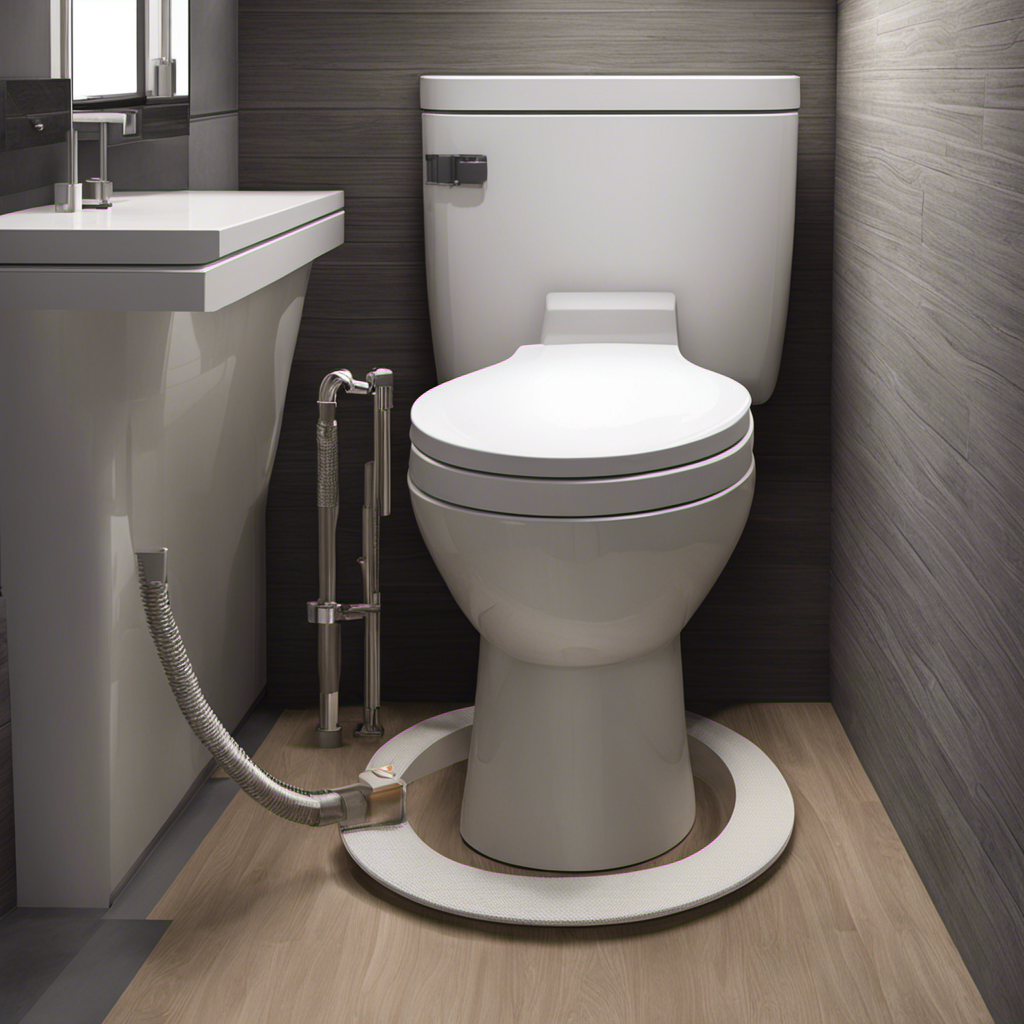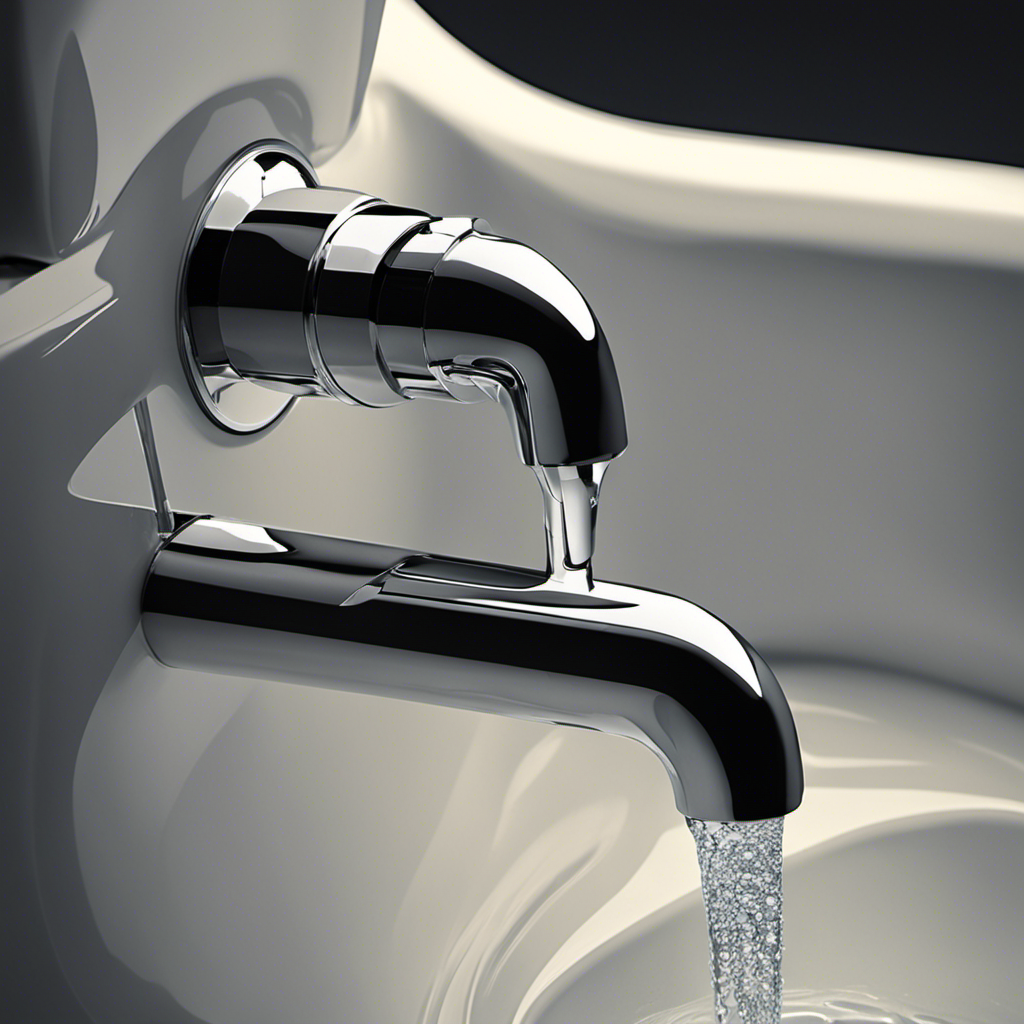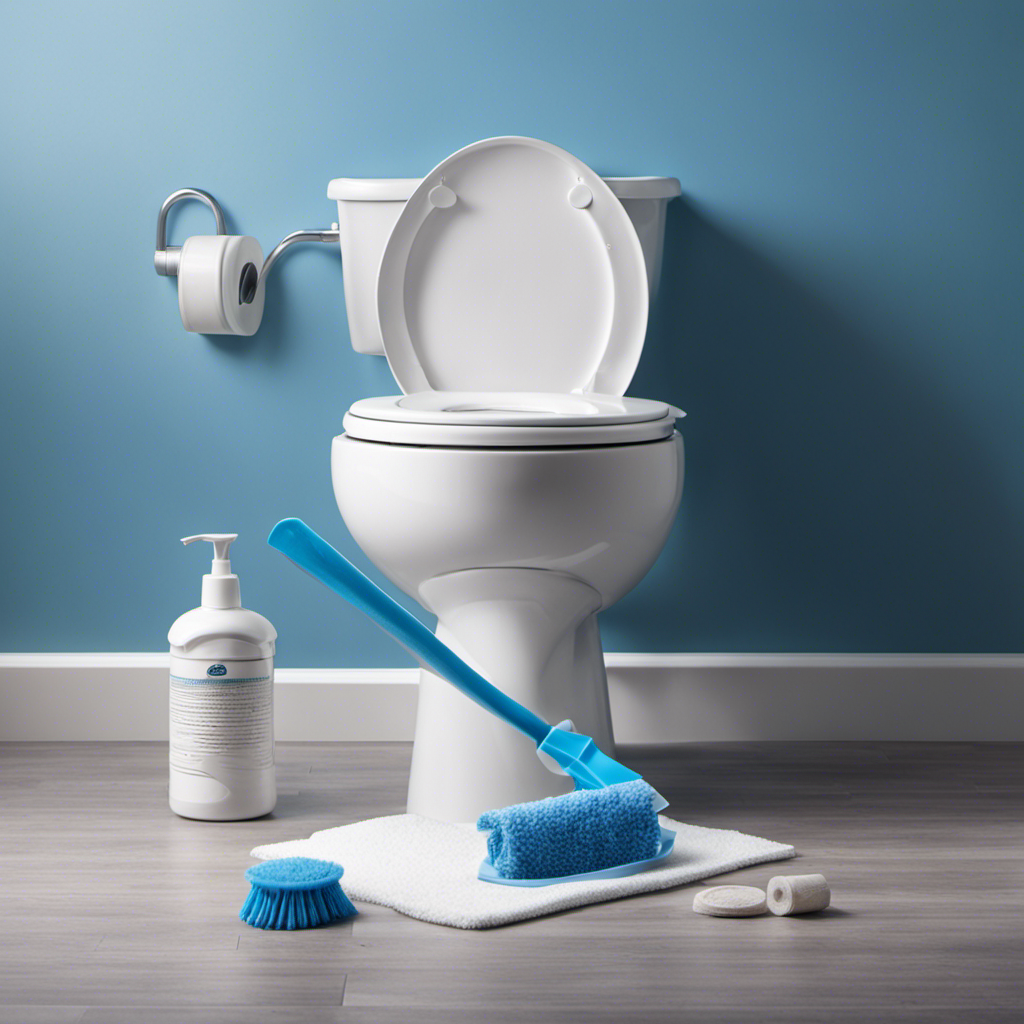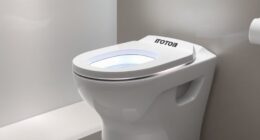As a seasoned bathroom connoisseur, I’ve encountered the frustrations of a lackluster toilet flush. Fear not, for I have scoured the depths of plumbing wisdom to bring you the ultimate guide on how to make your toilet flush better.
From identifying the common culprits behind weak flushes to implementing simple fixes and even upgrading your throne for optimal performance, this article will equip you with the knowledge and tools needed to achieve a powerful and satisfying flush every time.
So, let’s dive in and conquer the realm of efficient toilet flushing together!
Key Takeaways
- Identifying the common causes of a poor toilet flush is essential for improving flush performance.
- Implementing simple fixes such as using a plunger, replacing faulty valves, or adjusting the water level can restore the functionality of the toilet.
- Upgrading to a newer toilet with enhanced flush mechanisms and water-saving features can significantly improve flushing performance and efficiency.
- Regular maintenance, including cleaning the toilet bowl, adjusting water levels, and checking water pressure, is crucial for maintaining a powerful toilet flush.
Common Causes of Poor Toilet Flush
If your toilet isn’t flushing properly, one of the common causes could be a clogged or blocked trapway. Toilet clogs can occur when an excessive amount of toilet paper or other debris gets stuck in the trapway, preventing water from flowing freely.
Another possible reason for a weak flush is water pressure issues. Insufficient water pressure can prevent the flushing mechanism from working effectively, resulting in a weak or incomplete flush.
It’s important to address these issues promptly to avoid further complications. In the next section, I will discuss some simple fixes for weak toilet flush that can help improve the flushing performance and restore your toilet’s functionality.
Simple Fixes for Weak Toilet Flush
There’s some simple fixes you can try for a weak toilet flush. When dealing with toilet flush problems, fixing a weak flush is often just a matter of identifying the underlying issue and implementing the right solution.
One common cause of weak flush is a clogged or partially blocked toilet trap. To fix this, you can use a plunger to create suction and dislodge any blockages.
Another possible cause is a faulty flapper valve, which can prevent sufficient water from entering the bowl during the flush. In this case, replacing the flapper valve should resolve the issue.
Lastly, check the water level in the tank. If it’s too low, adjust the float valve to increase the water level.
Upgrading Your Toilet for Better Flushing Performance
To improve the flushing performance, you might want to consider upgrading your current toilet. Upgrading your toilet can enhance the flushing mechanism and allow for better water pressure adjustment. Here are four reasons why upgrading your toilet can make a difference:
-
Enhanced flush mechanism: Newer toilets are equipped with advanced flush mechanisms that provide a more powerful and efficient flush, ensuring waste is effectively eliminated.
-
Improved water pressure adjustment: Upgrading your toilet allows for better control over water pressure, allowing you to adjust it according to your specific needs.
-
Water-saving features: Many upgraded toilets come with water-saving features, such as dual flush options, which can help conserve water without compromising on flushing performance.
-
Durability and longevity: Upgrading your toilet ensures that you invest in a durable and long-lasting fixture that will continue to perform optimally for years to come.
By upgrading your toilet, you can significantly improve its flushing performance and enjoy a more efficient and powerful flush.
Now, let’s move on to some troubleshooting tips for a stronger toilet flush.
Troubleshooting Tips for a Stronger Toilet Flush
Let’s start by checking the water level in the toilet tank. To troubleshoot a weak toilet flush, it’s important to ensure that the water level is set correctly. The water level should be approximately 1 inch below the top of the overflow tube. If it’s too low, adjust the fill valve to increase the water level.
Next, let’s examine the toilet flush valve. This component is responsible for releasing water from the tank into the bowl during a flush. If the flush valve is worn or damaged, it may not allow enough water to flow through, resulting in a weak flush. Consider replacing the flush valve if necessary.
Additionally, water pressure adjustments can greatly improve toilet flushing performance. Ensure that the main water supply valve is fully open, as restricted water flow can weaken the flush. If the water pressure is too high, consider installing a pressure-reducing valve.
Maintaining a Powerful Toilet Flush
Ensure you regularly clean the toilet bowl to prevent any build-up that can hinder the power of your flush. Keeping the toilet bowl clean is crucial for maintaining a powerful flush. Here are four tips to help you maintain a powerful toilet flush:
-
Scrub the toilet bowl regularly using a toilet brush and a cleaning solution specifically designed for toilets. This will remove any mineral deposits, stains, or bacteria that may be affecting the flush.
-
Pay attention to the water level in the tank. If it’s too high or too low, it can affect the flush. Adjust the water level according to the manufacturer’s instructions to ensure optimal flushing performance.
-
Check the water pressure in your home. Low water pressure can result in a weak flush. If you have low water pressure, consider installing a pressure-assist toilet or a pressure booster to improve the flush.
-
Lastly, consider using a toilet bowl cleaner tablet or an automatic toilet bowl cleaner to keep the bowl clean and prevent any build-up that could affect the flush.
Frequently Asked Questions
Can Using Certain Types of Toilet Paper Affect the Flushing Performance of My Toilet?
Using low-quality toilet paper can negatively impact the flushing performance of my toilet. It is important to choose a toilet paper that is designed to dissolve easily to prevent clogs and ensure optimal flushing efficiency.
Are There Any Specific Cleaning Products or Methods That Can Help Improve the Flush of My Toilet?
To improve your toilet’s flush, try cleaning the rim and jets with a toilet brush and using a descaling solution. Adjusting the water pressure valve can also help optimize flushing performance.
Can a Clogged Sewer Line Affect the Flush of My Toilet, Even if the Toilet Itself Is Not Clogged?
A clogged sewer line can definitely impact the flush of a toilet, even if the toilet itself is not clogged. Tree roots are a common cause, so regular sewer line maintenance is important for optimal toilet flush performance.
Is It Possible to Adjust the Water Level in the Toilet Tank to Improve the Flush?
Yes, it is possible to adjust the water level in the toilet tank to improve the flush. By increasing the water pressure, you can ensure a stronger flush. Additionally, using a plunger effectively can also help improve the flush.
How Often Should I Replace the Flapper Valve in My Toilet to Maintain a Strong Flush?
I replace the flapper valve in my toilet every 3-5 years to maintain a strong flush. It’s an important part of troubleshooting a weak flush. If it’s old or worn, it can affect the flush.
Conclusion
In conclusion, by following the simple fixes and troubleshooting tips mentioned in this article, you can significantly improve your toilet’s flushing performance.
It is important to remember that a weak toilet flush is a common issue that can be easily resolved with a little effort.
Interestingly, studies have shown that upgrading your toilet to a more efficient model can save up to 13,000 gallons of water per year, making it not only a performance-enhancing choice but also an environmentally friendly one.
So, don’t underestimate the power of a good toilet flush!









